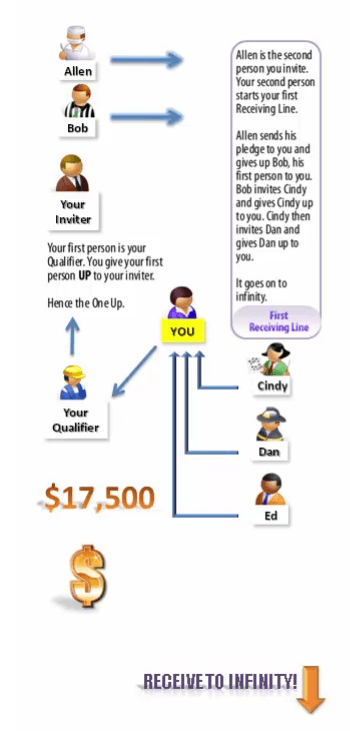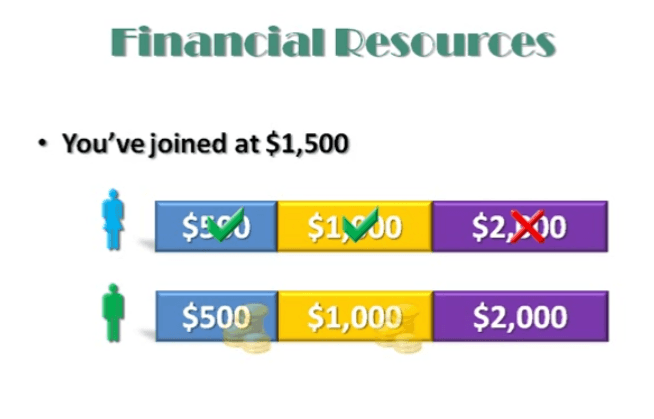Domain flipping isn’t as popular today as it was a decade ago, but it remains one of the ways people make money online.
You might be wondering whether this is still a viable online business, especially now that all the good domains seem to be already taken. Is it too late to make money from domain flipping?
Today, we’ll delve into the basics of domain flipping, how to successfully turn this into a business, and some challenges you’ll have to consider when you start your business.
What Is Domain Flipping?
Let’s start with what domain flipping is.
Domain flipping, in a nutshell, means buying and selling domain names for a profit.
But you can’t just do it with any old domain name. It needs to be a domain name that has the potential to be valuable; that is, someone will be willing to buy it for more than you paid for it.
Buy low, sell high. It’s the same principle.
How to Flip a Domain
There are four basic steps to flipping domains.
1. Search for a domain.
The first thing is to find a domain worth buying.
Domain providers like Namecheap, GoDaddy, and Hover are the first websites you normally look at.
Another tool to find domains is a drop-catching service, which allows users to bid on a domain name that’s about to expire. The service then selects the user with the highest bid and attempts to register the domain on their behalf.
This doesn’t guarantee that you end up with a domain, but it’s your best bet when you have an eye on a domain and want to get it once it’s available.
2. Register the domain name.
If you used a drop-catching service, then they would be registering the domain for you.
If you searched using domain providers, You’ll need to register it from them. The process is usually quick and painless.
3. Find a buyer.
This is the crucial step in domain flipping.
Because you want to profit, you’ll have to find a buyer willing to buy the domain from you for more than what you paid for it.
There are different techniques you can apply here.
You can adopt a buy-and-hold strategy, which is exactly as it sounds. Hold on to the domain for a while and wait for people interested in the domain to contact you.
If you’re doing this, make sure your Whois privacy is turned off so it’s easier for potential buyers to contact you.
A more straightforward approach is to create a landing page for your domain to attract people wanting to buy it. Indicate that the domain name is for sale and include your contact details so they can get in touch with you to buy it.
A more aggressive approach would be to sell your domain in a domain auction, like ones from GoDaddy, Sedo, or Flippa.
4. Sell the domain.
When you’ve reached an agreement with a buyer, the last step would be to exchange their cash for the domain.
Since you likely haven’t met this person and don’t know if you’re going to be scammed, it’s highly recommended to use an escrow service like Escrow.com.
6 Elements of a Successful Domain Flipping Business
Now that you know the basics of domain flipping, here are the 5 requirements or elements to be successful in this business.
1. Money
Domain names don’t come cheap nowadays, and to increase your luck in selling these domains, you’ll need to acquire a portfolio of domains.
So to make money, you’ll need to invest a huge chunk of money in building that portfolio of domains.
If you plan to create landing pages for each domain, you’ll also need to invest in landing page software to make it look professional. Examples of this software include Unbounce, Instapage, and Leadpages.
2. Knack for finding valuable domains
Luck plays a part when you’re looking for domains to flip, but you can’t luck your way every single time.
You’ll need to spend some time evaluating domains and finding out if these are potentially valuable enough to sell for a profit.
Look at things like the length (the longer it is, the harder it is to remember), brandability (does it roll off the tongue? Can you easily spell it?), relevance (is it connected to an industry at all?), and search friendliness (does it have keywords that internet users will be searching for?).
Another thing to consider is the extension. The .com extension is the ideal, the gold standard when it comes to domain flipping. All the other popular extensions like .net, .org, or .co are a far second, but can still be desirable, especially if the .com equivalent is already taken or is far too expensive.
Don’t forget local top-level domain (TLD) extensions, which are local to the geographical location of where the website is at. Popular ones include .uk and .us.
There are also tools out there, such as GoDaddy’s Domain Name Value & Appraisal Tool, that can help you when doing your due diligence.
3. Time
You can’t make money with domain flipping if you’re impatient. When you buy domains, you can’t expect to sell them within an hour or even within a day.
There is an element of sitting on them for a bit so they go up in value. It may take a few months to work up a decent deal on a domain.
This is why you need money to build up an entire portfolio of domains; play the numbers game instead of placing your hopes on finding a unicorn of a domain name that will have a 6-digit payout.
4. Openness to Diversify Your Business
Domain flipping can be lucrative over time, but may only be exciting up to a point.
When you’ve earned enough profit to expand your business, you can either hire a team of domain flippers to widen your portfolio even more, or you can go into another business.
Website flipping is kind of similar to domain flipping in that you invest in domains, but in website flipping, you do a lot more than just sell the domain.
You actually create a website that goes with the domain (as in, you wouldn’t expect to read about crafts on a website called dressdiva[dot]com, for example) and then make it an income-generating one.
Write excellent content for this website and get it up on search results pages through SEO and link building techniques. Utilize social media marketing and Google Ads as well.
Once it has plenty of traffic, it’s time to find potential buyers or auction off this website.
5. Solid Business Plan
Just like launching any kind of business, you’d have to perform a lot of market research and planning.
Learn everything you can about parked domain names, finding potential buyers, and the auction process.
You would also need to draw up a budget that you can realistically work with, including capital for buying domains as well as your business expenses, such as advertising and marketing.
If you decide you want to be serious about domain flipping as a long-term business, make sure you register as an LLC and start your own website.
6. Business savvy
Buying and selling domains is not a passive income business. You definitely have to have the stamina to constantly look for domains to flip.
But you also need to learn how to cut your losses and recognize when a particular domain just isn’t going to be profitable.
Also, when your business grows, you’ll need to have an efficient system for keeping track of all your domains.
Risks and Challenges in Running a Domain Flipping Business
To be able to run a successful domain flipping business, you would also need to learn about the risks and challenges so you can work with them or around them.
1. The get-rich-quick mindset
Cars.com was the most expensive domain name ever sold at $872 million. Insurance.com was worth $35.6 million, while Voice.com was worth $30 million.
Reading about these stories probably got you interested in domain flipping in the first place, but you need to switch your mindset from get-rich-quick to the long haul.
Going in with a “I’ll buy one domain and sell if for millions tomorrow” is a sure way to get you burned out quickly.
Focus on buying a number of affordable, high-potential domains and selling them at modest profits.
Practice makes perfect, and the more profitable domains you’re able to sell, the better you will be at it. Eventually, your profit margins will get higher.
2. Buying a trademarked name
It might be tempting to buy a domain like starbucks.net and then try to sell it back to Starbucks, hoping for a big payday.
Nope.
Buying a trademarked name can get you in a lot of legal trouble.
Best case scenario? They ask you to hand over the domain without paying a single cent, so you lose out on your investment.
Worst case scenario? They sue you and you end up paying legal costs in a battle you’ll surely lose.
Bottom line? Not worth it.
3. The ethics of domain flipping
Many people feel like buying up domain names and then sitting on them, waiting to go up in value so you can sell them, is an unethical practice.
Web developers, entrepreneurs, and even those who own larger businesses, frown upon this practice because these are the ones who are looking for domain names, only to find that someone else is holding that domain name.
But don’t fret. Domain flipping is as legal, legitimate, and ethical as real estate flipping, and no one bats an eyelid about that.
Just because some entrepreneurs had the foresight and the skills to recognize a valuable domain name before others did doesn’t make them bad. Besides, if they aren’t buying from you, they’re going to buy that domain from someone else.
4. Almost all the good .com domains are taken
There are almost 100 million .com domain names that have been registered thus far.
It’s a large number and it can be overwhelming enough to make you wonder if it’s too late to get into domain flipping at all.
But the truth is millions of them have not been used and are bound to expire at any moment. If you catch them, then you have a potentially valuable .com domain in your portfolio.
Also, these aren’t all the .com domains on the internet ever. There will be two to three word .com domains still available for you to buy at an affordable price.
Is Domain Flipping For You?
You now know about the basics of domain flipping, what you need to be successful, and the risks and challenges you are likely to face.
Hopefully this is enough for you to consider whether domain flipping is a business that’s right for you.
If this doesn’t sound like a good fit but you’re still interested in starting a business, get inspiration from our list of small business ideas.
Planning to start your domain flipping business today? Share your plans with us in the comments below!










